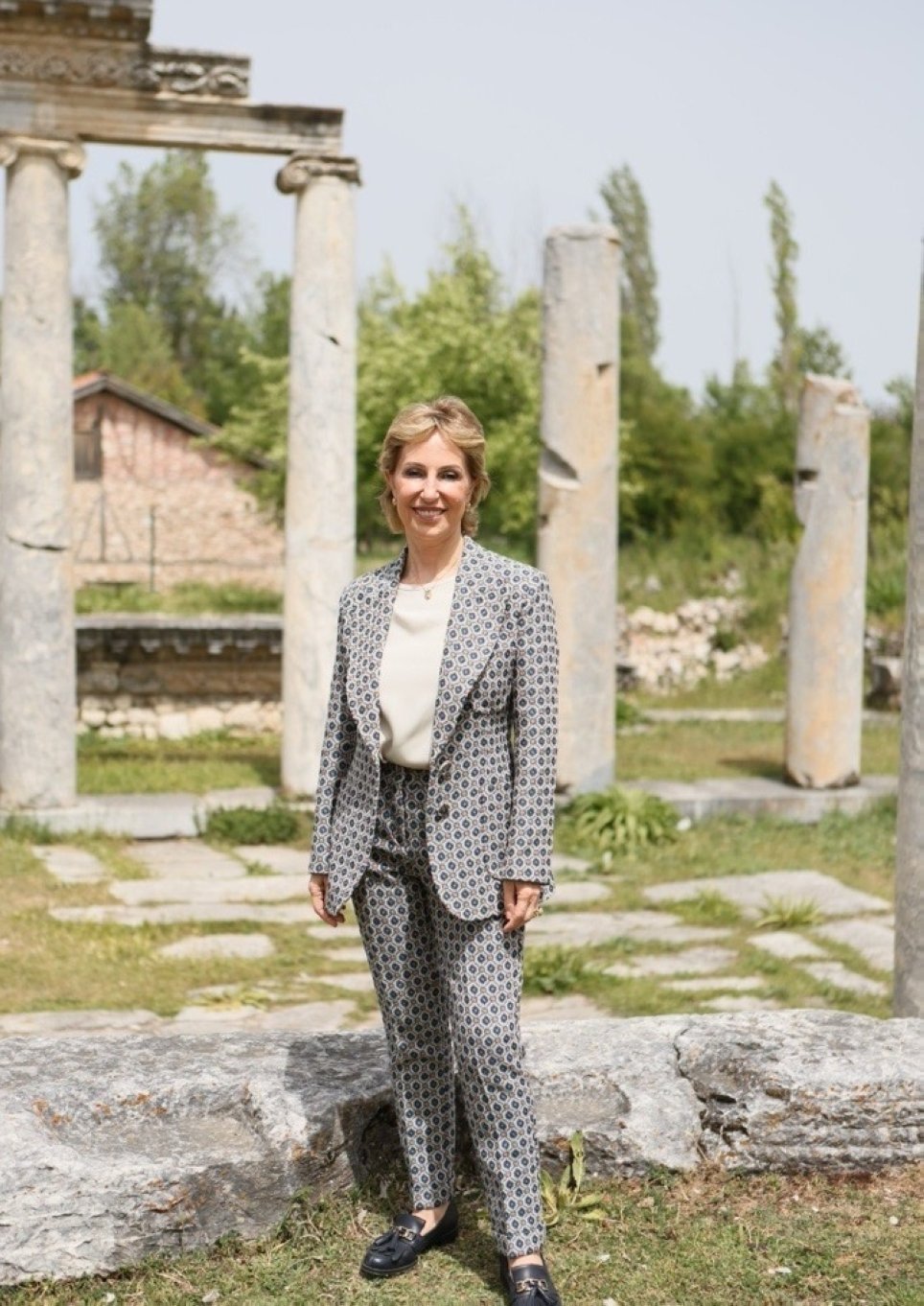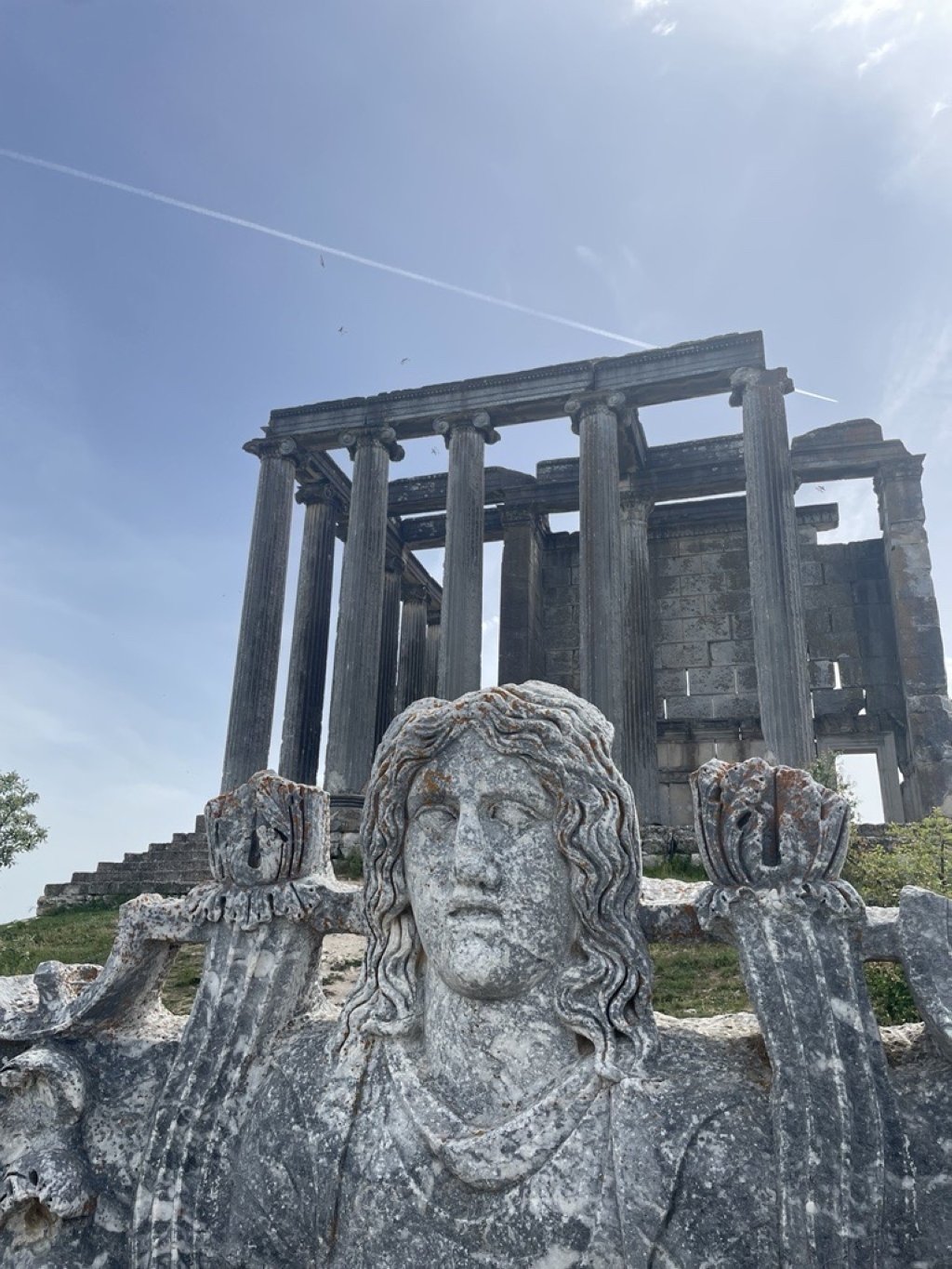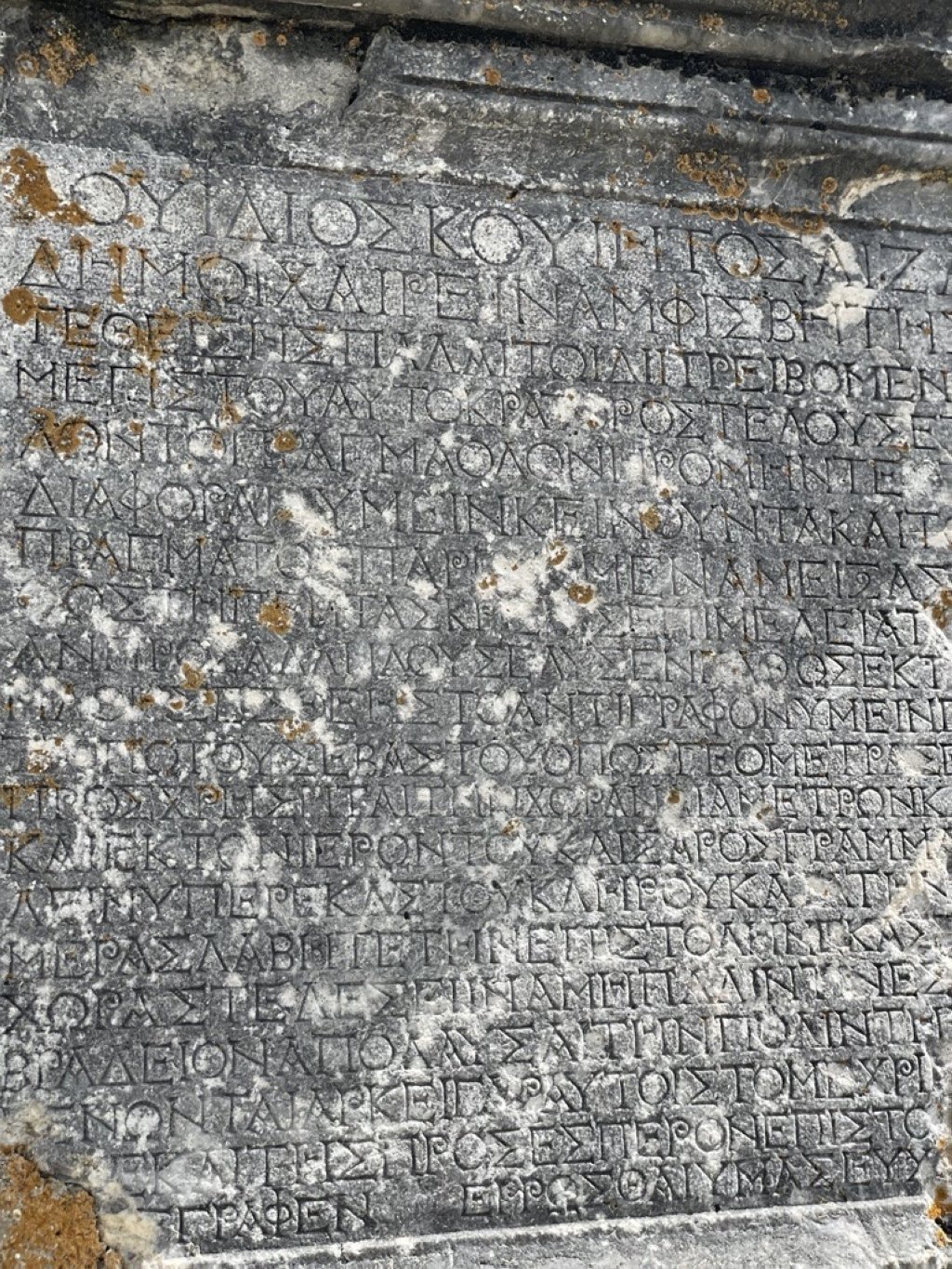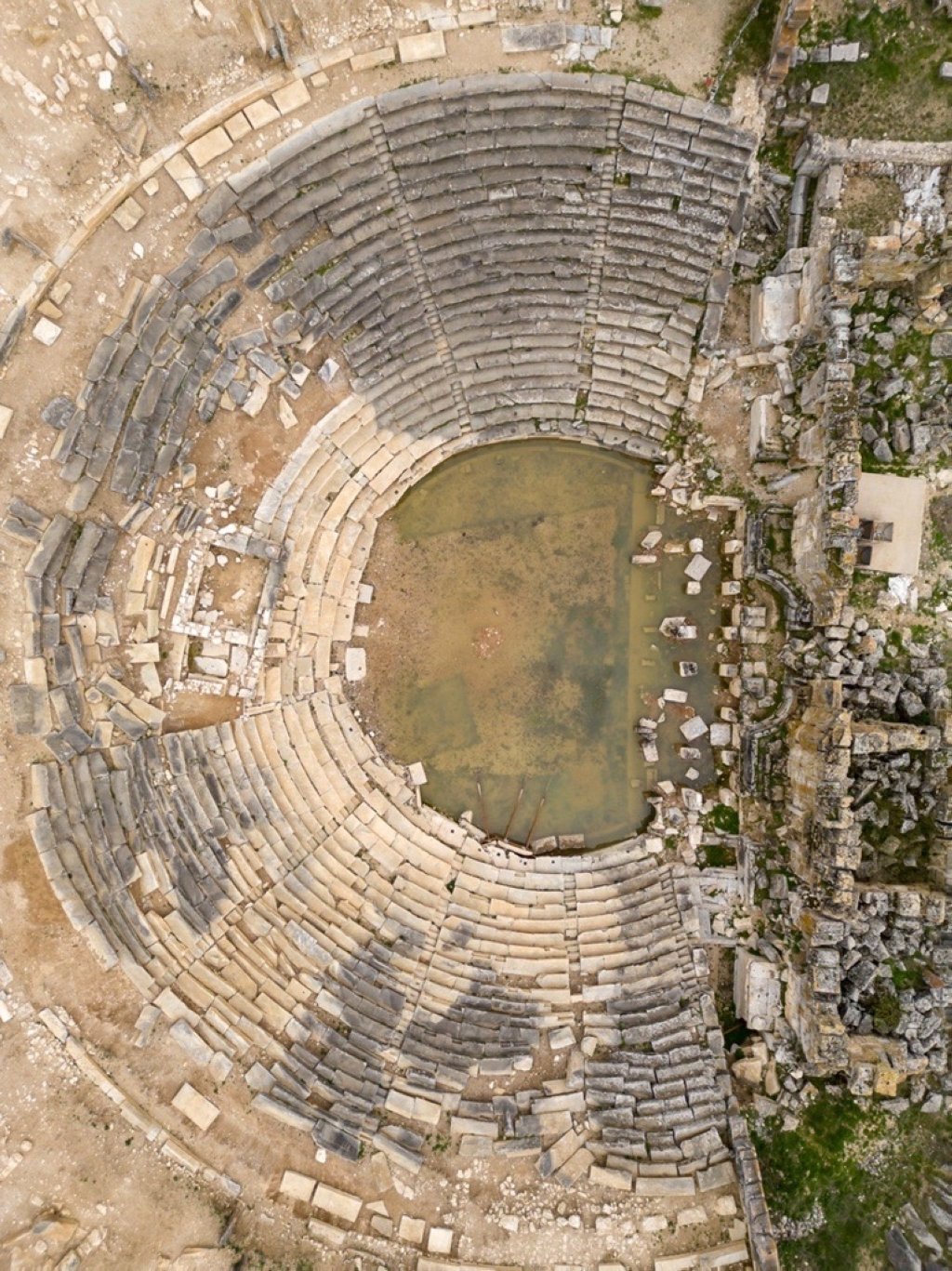© Turkuvaz Haberleşme ve Yayıncılık 2024
As you approach the ancient city of Aizanoi in the Çavdarhisar district of Türkiye's Kütahya, included in UNESCO's World Heritage Tentative List, the Temple of Zeus, the city's main sacred site perched on a hill, dazzles you with its silhouette even before you enter. The most remarkable aspect is knowing that there is no other structure in the world as well-preserved as this one.
Dating back to 3000 B.C., Aizanoi boasts the best-preserved Zeus Temple in the world, along with a theater, stadium, agora, two baths, the world's first stock exchange building, a colonnaded street, two remaining bridges out of five over the Kocaçay, two agoras, a gymnasium, the Meter Steunene sacred area, necropolises, an ancient dam, water channels and gate structures. Excavations have so far uncovered only 10% of this ancient city, which has become one of the most important archaeological sites due to its many firsts in Anatolia and globally.
Aizanoi served as the administrative center of the Aizanitis region of Phrygia. In 133 B.C., the Roman Empire took control of the area. Most of the structures still standing today date back to the Roman era. It was a major metropolis in its time, significant in both commercial and political spheres, and was one of the largest cities in the world.
During the tour of the ancient city, Fikret Özbay, the deputy head of the excavations, emphasized that this place was a project city. Under the Antonines, Aizanoi adopted Hadrian's panhellenic ideology and thrived into the early third century, investing in the construction of temples, theaters and a market hall, aimed at rapidly transforming the city into a metropolis. However, when Hadrian did not approve of Aizanoi becoming a metropolis, the city fell from grace. After a 150-year peak, it almost completely entered another decline in the fourth century.

Since 2020, excavations at the ancient city of Aizanoi have been sponsored by the Gürok Group. Born in Kütahya, the group continues contributing to comprehensive societal development through this sponsorship. The excavations, included in UNESCO's World Heritage Tentative List since 2012, are carried out by the Archaeology Department of Kütahya Dumlupınar University (DPU) Faculty of Arts and Sciences. Gürok Group collaborates with the Ministry of Culture and Tourism, the Turkish Historical Society, Kütahya Governorship and the Kütahya Museum Directorate.
Esin Güral Argat, the vice chairperson of Gürok Group, described their mission in sponsoring the excavations during the press trip: “We are always focused on doing our work well for a more sustainable future and adding value to life, nature and our country. We see the preservation and promotion of cultural heritage as part of this mission. With the vision of making Kütahya known not only as an industrial city but also for its tourism and cultural richness, we have supported the Aizanoi excavations since 2020. We understand that development is possible by realizing potential in all areas, not just one. We will continue to support culture and art. These excavations shed light on the life and city culture of the period, holding immense value for cultural heritage and Kütahya’s tourism potential.”
Argat also noted the increasing number of tourists visiting Aizanoi: “As the Gürok Group, we see the results of our efforts to promote Aizanoi. In 2023, visitors to Aizanoi reached 44,842, a 143.71% increase from 2020. Seeing such growth in just three years, despite the COVID-19 pandemic, is a very positive development. We continue to work toward making Kütahya a brand city known for its tourism and cultural richness.”
The first scientific archaeological excavations in Aizanoi began in 1926 by the Deutsches Archaologisches Institut, focusing on the Temple of Zeus.

The temple, dazzling in its grandeur, can be cited as an example of the dual worship practice in pagan tradition. Particularly prevalent in Anatolia, this practice entails a temple dedicated to the chief deity Zeus, which includes a female figure in its northwest section. Since this figure is presumed to represent the goddess of abundance, Cybele, it is believed that prayers were also offered to Cybele in the same temple.
The underlying structure, perhaps serving as an oracle site or the temple's storage area, may have also hosted certain rituals due to the mythological tale of Zeus being born by Rhea in a cave and hidden in a cave. According to interpretations by local archaeologists, these rituals likely included offering animal sacrifices, washing with blood and symbolizing the birth from the womb.

Construction of the temple began in the second quarter of the second century A.D. The necessary expenses for construction were estimated to be covered by leasing vast temple lands. Those who leased the land resisted paying for many years; however, construction of the temple could begin once the funds were paid following Emperor Hadrian's decision. Correspondence between the emperor and the city regarding this matter was so significant for Aizanoi that the location specially prepared for this inscription on the north side of the temple's front gallery has been preserved to this day.
Long inscriptions are also found on the outer side of the same wall. Here, mention is made of M. Apuleius Eurykles, known from the inscription of the bridge at the ancient city. The inscription praises Eurykles for his virtues and deeds for the city. Drawings depicting scenes of war, horsemen and horses are found on the temple's inscriptions and ashlar stones. These drawings depict scenes from the lives of the Çavdar Turks who sought refuge behind the walls surrounding the temple in the 13th century. Cross drawings, believed to be drawn by Christian communities, are also found.

There are two locations found in Aizanoi where Roman baths were situated. The first one is next to the road that leads from the Zeus Temple to the complex of stadium-theater.
Providing information specifically about the first one, Özbay explained: "Today, when we go to Rome, we encounter colossal baths. These are massive complexes with libraries inside and rows of shops outside. The bath culture in Rome was a political tool. The emperors also used it as a propaganda tool. For example, there is a bath in Rome called the Baths of Caracalla, which is almost larger than the stadium here. Emperors loved them, and the public loved them too. We know that an average Roman spent three to four hours a day in the baths, provided they were citizens. Consequently, a 500-kilometer (310-mile) water network was built in Rome."
"Here, however, we have a more modest bath. It consists of two symmetrical structures. When you fold the plan, they overlap with each other. There are the caldarium and the frigidarium, the hot and cold sections. There are dressing and undressing areas on the sides. Inside the bath, there is a heating system we call a hypocaust. You can see this as the ancient version of today's modern underfloor heating. Underneath, a large furnace fueled by charcoal burns," he said.
"Massive boilers heat the water. This water is then circulated through pipes within the system. It circulates inside the walls and floors, providing a constantly warm environment. The floors are heated as well," he added.
"Then we have the 'natatio,' which is a relaxation pool. It's like the pools we know, but not very deep. You sit on a bench and rest your arms on the edge of the pool. You finish your day enjoying the circulation of the water. Right next to it, we have the 'palestra.' The 'palestra' is a courtyard. We believe the palestra is next to the area where we have not yet conducted excavations. Palestras are generally associated with gymnasiums. They are used for activities such as gymnastics, wrestling, boxing or simpler sports activities. Therefore, they are adjuncts to both gymnasiums and baths."

Since the seating rows of the stadium are slightly polygonal, the structure widens in the middle. At the widest section, there is a gate building on the west side. During the restoration, two seating stones placed on the podium made the gate building unusable as it was covered by seating steps added at a later period. The facade of the stadium facing the theater is bordered by a marble-clad wall. This quite large and almost unique structure met all the entertainment needs of the city in its time.
According to Özbay, in the Roman cultures settled in Anatolia, especially in the context of games, there were no deadly ones. Instead, reenactments of battle scenes, gymnastics or some shows involving animals were performed here.
One of the earliest stock exchange markets in the world was established in Aizanoi. The Macellum, a circular building, dates back to the A.D. mid-second century and likely functioned as a food market. Inscriptions on its walls list the prices of various goods sold in the markets of the Roman Empire, regulated by an edict issued in A.D. 301 by Emperor Diocletian to combat inflation. These inscriptions have survived intact and can still be read today.
Thanks to the ongoing excavations with the support of the Gürok Group, significant discoveries have been made so far, including a 2.10-meter-tall male statue from 2,000 years ago, as well as the heads of the Greek love god Eros, wine god Dionysos and demigod Herakles. Excavations have also unearthed various cosmetics used by Roman women, such as blush, eyeshadow and numerous perfume bottles.
